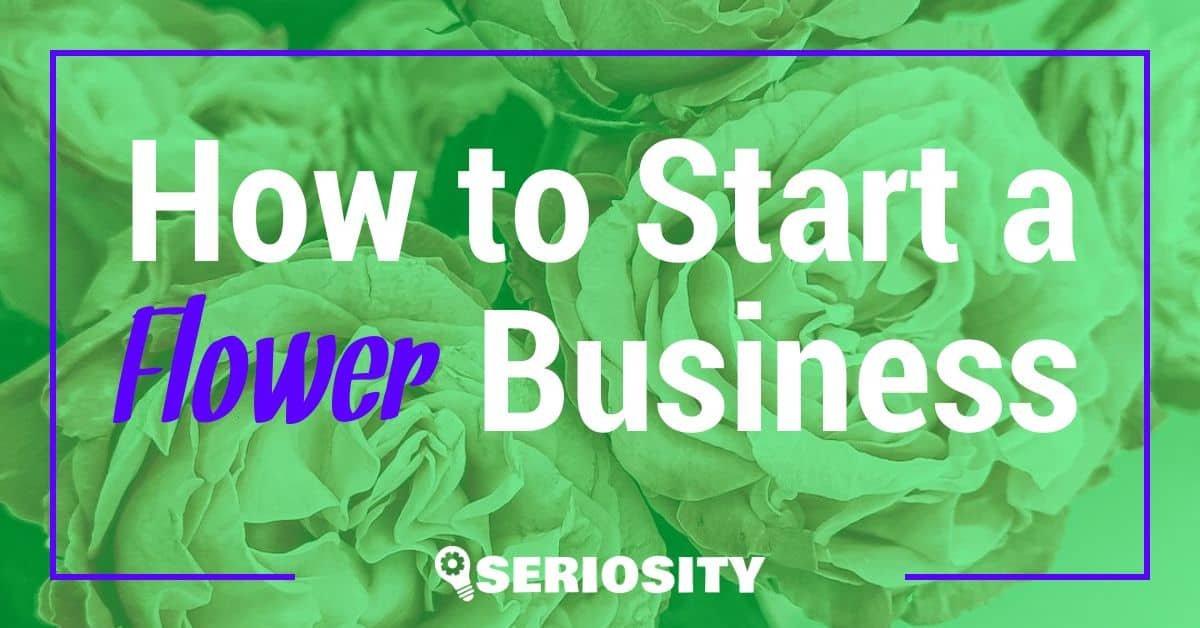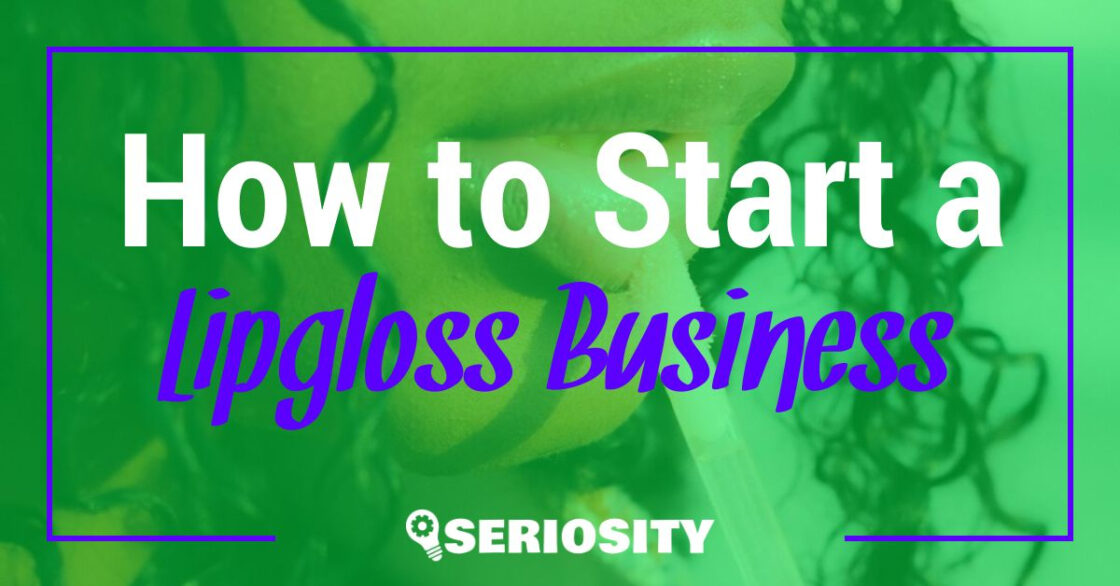Starting a flower business might seem like a dream come true for those who harbor a deep passion for plants and flowers. In today’s world, floral businesses are constantly evolving – catering not only to flower arrangements for events and occasions, but also to the everyday demand for aesthetically pleasing home decor and thoughtful gifting options. Starting a flower business typically begins with understanding the ins and outs of the flower industry, and this article aims to guide you through the essential steps to embark on your floral journey.
A successful flower business starts with a well-crafted plan that incorporates market research, knowledge of design principles, and budgeting strategies. Determining the size of your initial investment and the specific niche you’d like to target will ultimately influence the direction of your venture. From a modest at-home set-up to a full-fledged brick-and-mortar store, starting a flower business can be tailored to suit various budgets and preferences.
In addition to exploring the different financial aspects and seeking solid trade knowledge (either through community college programs, certification courses, or apprenticeships), aspiring floral entrepreneurs should prioritize honing their creative skills and personal style. Doing so will ensure the ability to make unique and memorable arrangements that stand out in a competitive market. As you traverse through the exciting world of floral entrepreneurship, remember that patience and perseverance will be your constant companions on your journey to success.
Starting a Flower Business
Business Plan
To begin your flower business venture, it’s crucial to develop a comprehensive and well-researched business plan. This plan should outline your flower business’s objectives, target market, and projected profitability.
- Include information on costs, such as flowers, rent, and any necessary permits and licenses
- Address your plan for sourcing flowers, either from wholesalers or cultivating them yourself
- Assess competitor landscape and outline your differentiation strategy
- Incorporate a financial plan, including sales projections and a break-even analysis
Mission Statement
A concise mission statement provides guidance on the vision you have for your flower business. It should encapsulate the purpose of your florist shop and the value it brings to customers.
- Be clear and specific, mentioning core values and overall goals
- Keep it short, ideally one or two sentences
Legal Business Entity
Before opening your flower business, decide on the legal structure suited for your needs. There are four primary legal entities to choose from:
- Sole Proprietorship
- Partnership
- Limited Liability Company (LLC)
- Corporation
Consider the level of liability protection, tax implications, and management structure of each option before making a decision. Consult with a professional advisor if necessary.
Location and Storefront
Selecting an ideal location and storefront for your flower business is critical to attracting customers and showcasing your creative talents.
- Choose a location with high foot traffic and visibility, ideally near complementary businesses such as wedding planners or gift shops
- Ensure the space is large enough to accommodate your operations, including a design area, storage for flowers, and a cooler
- Take into account rent affordability and the potential need for improvement or renovation
- Ensure compliance with local regulations and obtain necessary permits and licenses
As you progress in establishing your flower business, remember to obtain an Employer Identification Number (EIN) for tax purposes and register your business name in accordance with local requirements. Developing a successful florist shop requires a keen eye for detail, patience, and a wealth of knowledge about flowers and plants. But with dedication, creativity, and a solid plan, your business can flourish.
Floral Design and Products
Floral Design Education
To start a flower business, it’s important to have a strong foundation in floral design. Consider taking certification classes or attending workshops to develop your skills. The American Institute of Floral Designers (AIFD) offers a comprehensive certification program to become a Certified Floral Designer (CFD). Courses cover topics such as flower arrangement, color theory, and design techniques.
Floral Arrangements
Floral arrangements are an essential aspect of a flower business. Offer a wide range of flower types, including popular choices like roses and seasonal blooms. Additionally, ensure you provide a variety of arrangement styles, such as bouquets, centerpieces, and corsages. Keep up to date with current trends and seek inspiration from industry events or social media.
Seeds and Soil
High-quality seeds and soil play a critical role in the success of a flower business. Source seeds from reputable suppliers and seek advice from gardening professionals. Understand the different soil types and choose the appropriate mix for each plant species. Consider offering organic seeds and soil products to cater to customers seeking eco-friendly options.
| Seed Types | Soil Types |
|---|---|
| Organic | Loam |
| Heirloom | Sandy |
| Hybrid | Peaty |
| Native | Clay |
Vases and Pots
Offering an assortment of vases and pots can help boost sales and improve customer satisfaction. Carry a range of sizes, styles, and materials to cater to different customer preferences. Popular materials include glass, ceramic, and metal. Consider working with local artisans for unique, locally-made items.
| Vase Materials | Pot Materials |
|---|---|
| Glass | Ceramic |
| Ceramic | Terracotta |
| Metal | Plastic |
Accessories
Don’t forget to stock a variety of floral accessories to complement your offerings. Provide essentials such as ribbons, foam, and greenery. Offer decorative items like baskets, ornamental sticks, and crystals. Stay informed on emerging trends to ensure your accessories selection remains current and appealing.
- Ribbons
- Floral foam
- Greenery
- Baskets
- Ornamental sticks
- Crystals
Inventory and Suppliers
Wholesalers
Establishing a relationship with reputable wholesalers is crucial for a successful flower business. Wholesalers provide access to a wide variety of flowers, including both local and imported varieties. They typically offer lower prices compared to retail outlets, which can help increase your profit margin. Research local and national wholesalers to compare prices, quality, and shipping options. Some wholesalers to consider include:
- Local wholesale markets
- National floral distributors
- Online wholesale platforms
Local Florists
Collaborating with other local florists can be beneficial for both parties. By establishing a network within the industry, you can share knowledge, resources, and even clientele. Some local florists may also offer wholesale prices on flowers and materials, as they have access to bulk purchase discounts. Make sure to maintain good relationships with fellow florists to encourage mutual support and growth in the industry.
Buying Flowers and Materials
When sourcing flowers and materials for your flower business, consider the following factors:
- Seasonality: Choose flowers that are in season to ensure freshness and availability. Seasonal flowers are typically less expensive because they are more readily available.
- Budget: Determine your budget for flowers and materials and stick to it. Comparing prices from various suppliers can help you find the best deals.
- Quality: Prioritize high-quality flowers and materials to create stunning arrangements that will impress your customers and encourage repeat business.
Below is a table of essential materials for your flower business:
| Material | Purpose |
|---|---|
| Soil | Growing and maintaining flower health |
| Seeds/Plants | Stocking up on various flower types |
| Vases | Displaying and selling arrangements |
| Ribbons | Adding decorative elements to arrangements |
| Pruning equipment | Maintaining and trimming flowers |
By carefully selecting your inventory, suppliers, and materials, your flower business will have a solid foundation for success. Just remember to maintain a balance between affordability and quality to ensure customer satisfaction and business growth.
Costs and Budgeting
When starting a flower business, it’s essential to understand and plan for the various costs associated with the venture. By budgeting effectively, you can ensure that you have enough capital to cover all the necessary expenses, leading to a successful business. In this section, we will explore the startup costs, running expenses, and budgeting techniques.
Startup Costs
To get your flower business off the ground, you will need to cover several initial costs. These include:
- Premises: Whether you’re opening a physical store or operating a flower farm, you will need a location to carry out operations. If you’re not buying property outright, you’ll need to budget for rental or mortgage costs.
- Equipment and Supplies: This covers items such as display cases, a cash register, vases, tools, seeds, and plants.
- Staff: If you plan on hiring employees, budget for salaries and employee benefits.
- Website and Online Presence: Budget for building and hosting a website, as well as any associated costs in online marketing and advertising.
Here’s an example of startup costs for a small flower business:
| Item | Cost |
|---|---|
| Premises (rent for the first 6 months) | $12,000 |
| Equipment and Supplies | $5,000 |
| Staff (3 employees) | $30,000 |
| Website and Online Presence | $3,000 |
| Total | $50,000 |
Running Expenses
As your business grows, you will encounter ongoing expenses to keep it operational. These include:
- Rent or Mortgage: Depending on your choice of location, this will be an ongoing cost.
- Utilities: Expenses such as water, electricity, and heating need to be considered.
- Inventory: Regularly replenishing flowers and other supplies is necessary.
- Maintenance and Repairs: Allocating funds for regular maintenance of equipment and the store.
- Marketing: Advertising and promotional costs to attract new customers and retain existing ones.
- Insurance and Taxes: Budget for any required insurance policies and taxes.
Budgeting for Success
Creating a detailed and realistic budget is crucial for any business’s financial success. Follow these steps to create a budget for your flower business:
- Research: Conduct thorough research on the market, pricing structures, and competitors to inform your budget. Also, consult with other business owners to gain insight into their expenses.
- Project Revenue: Estimate your potential revenue based on market trends, pricing, and sales forecasts. Remember to stay conservative in your estimates.
- Calculate Expenses: List and calculate all current and predicted expenses for the business. Be as precise as possible, and create contingencies for unexpected costs.
- Analyze Profit Margins: After calculating your projected revenue and expenses, determine your profit margins. Ensure that these margins are sufficient to cover any loans, debts or investments.
- Adjust and Update: Regularly review and adjust your budget as your business grows or market conditions change.
By carefully considering the costs and budgeting for your flower business, you’ll increase your chances of creating a successful and sustainable venture.
Marketing and Target Audience
Marketing Plan
A robust marketing plan is crucial in starting a successful flower business. Begin by conducting thorough market research to understand customer preferences and establish a pricing structure that caters to your target market’s behavior and your business expenses. This will help create various strategies tailored to niche groups within your target audience.
Your marketing plan should also include a solid online presence. Build an attractive, user-friendly website as this is essential for reaching potential customers, showcasing your floral creations, and allowing them to order flowers online. If possible, secure a memorable and relevant domain name that aligns with your brand.
Advertising and Promotion
Effective advertising and promotion are key to attracting and maintaining customers. Customize your marketing materials based on your target audience and ensure that they reflect your business and its mission statement. These materials may include flyers, banners, brochures, social media content, or newsletters.
Consider engaging your audience through special promotions like discounts or workshops, and forge strategic partnerships with complementary businesses to attract customers to your flower business. Remember to utilize social media platforms, providing frequent updates and engaging visual content to build rapport with your audience.
Additionally, maintain excellent customer service to ensure that your clients are satisfied and return to your business. Respond promptly and professionally to inquiries, establish personal relationships, and cater to custom requests where possible.
Target Market Analysis
A comprehensive target market analysis is pivotal in the success of your flower business. Consider the primary purposes for which customers will purchase from you, such as weddings, corporate events, or personal gifts. Conduct surveys and gather feedback to identify preferences and opportunities within your market.
When analyzing your target market, consider factors such as age, location, interests, and purchasing habits. This information will allow you to align your products, services, and online store to cater to your audience’s preferences. Aim to create an e-commerce platform that provides a smooth and visually appealing experience for customers, facilitating quick and secure transactions. Invest in quality decoration and design of your online business to leave a lasting impression.
By combining these marketing strategies, you can craft a strong foundation to promote and grow your flower business.
Online Presence and E-commerce
Website Creation
Creating a professional website is vital for any online flower business. Successfully selling flowers and floral arrangements through e-commerce begins with registering a domain name and choosing a reliable web hosting service. Next, you’ll want to pick a design layout that showcases the unique offerings of your business. Good quality product photography and well-written product descriptions are also essential for an attractive and informative website.
Online Store Platforms
There are several online store platforms available for setting up your e-commerce flower business, such as Shopify and Amazon. These platforms provide powerful tools for easily managing product listings, payments, and customer communication. Here are some key features of each:
- Shopify: With its business name generator, logo maker, and various store themes, Shopify offers an all-in-one solution to create a successful online store. Plus, it provides simple tools and unique features for managing your business from a single dashboard.
- Amazon: As a global e-commerce giant, Amazon presents an opportunity to reach millions of potential customers. By listing your flower products on their platform, you can take advantage of Amazon’s established customer base, vast marketing tools, and efficient shipping services.
Selling on Amazon
To sell flowers on Amazon, start by creating an Amazon seller account. Once registered, you can list your flower products and floral arrangements. Keep in mind the importance of high-quality images and detailed, engaging product descriptions to attract potential customers. Additionally, consider using Amazon’s fulfillment service, FBA (Fulfillment by Amazon), to streamline your shipping, returns, and customer service processes.
Selling on Shopify
Setting up your flower business on Shopify starts with creating a seller account and customizing your online store with an appealing theme. Product pages should include captivating images and concise descriptions for each flower or floral arrangement. Shopify also offers access to various marketing, sales, and inventory management tools. Through its easy-to-navigate platform, you can manage and scale your business efficiently.
Operations and Management
Staff and Training
When starting a flower business, it’s essential to hire a dedicated and passionate team. Employees should be able to handle various tasks such as arranging flowers, running the cash register, answering phone calls, and interacting with customers. Training is key in ensuring the team is well-versed in the techniques and skills necessary for working in the flower industry. Consider providing staff with:
- On-the-job training for new hires
- Workshops or seminars for continuous learning
- Updates on industry trends and best practices
Accounting and Finances
Managing your finances is a critical aspect of running a flower business. Keep track of your cash flow, inventory, and expenses by implementing an efficient accounting system. You may choose to handle finances yourself or hire an accountant. Consider investing in financial software to help track:
- Expenses, such as rent, utility bills, and employee salaries
- Revenue from flower sales and services
- Taxes and legal compliance
To assist in making informed decisions, create a budget and monitor it regularly. Be prepared to adjust your budget as needed when changes arise in the market or unforeseen expenses occur.
Delivery Vehicles
Delivery is an important aspect of the flower business, and having a proper delivery vehicle is crucial. Ensure your chosen vehicle meets your operational needs and conforms to local regulations. Factors to consider when selecting a delivery vehicle include:
- Size and capacity: The vehicle should be large enough to accommodate large flower arrangements and multiple deliveries.
- Fuel efficiency: Choose a vehicle with reasonable fuel consumption to keep operating costs low.
- Maintenance: Opt for a low-maintenance vehicle to minimize expenses and downtime.
Remember to display your company’s logo on your vehicle to increase brand exposure and ensure a consistent, professional appearance.
Legal and Administrative Aspects
Taxes and Licensing
When starting a flower business, it is crucial to understand the taxes and licensing requirements. In the United States, most municipalities require flower shops to have a business license. Along with the business license, you may need to apply for a resale license (also called a reseller’s certificate) since you’ll be charging sales tax on the resale of your inventory1. Check with your local state and city business offices to determine the specific requirements.
- Business license: A legal permit to operate your flower business.
- Resale license: A license that allows you to resell inventory and charge sales tax if applicable.
Insurance and Liability
Another important aspect of starting a flower business is managing your risks and having adequate insurance coverage. Here are a few common insurance types for flower businesses:
- General liability insurance: This covers various lawsuits and claims resulting from accidents, property damage, and personal injuries. It can help protect your flower business against financial liabilities.
- Property insurance: This covers damage to your shop, equipment, and inventory in case of a fire, theft, or other disasters.
- Workers’ compensation insurance: If you’re hiring employees, this insurance is required in most states to cover job-related injuries, illnesses, or death of employees.
To assess your specific insurance needs and options, consult with an insurance agent familiar with the florist industry.
Building Credit
Establishing and maintaining a solid credit profile is vital for your flower business. Business credit can help you secure better terms from suppliers, get lower insurance rates, and attract investors. Here’s how to build your credit:
- Register your business: Register your business with the state and obtain an Employer Identification Number (EIN) from the IRS.
- Open a business bank account: Establish a separate account for business transactions, making it easier to track income and expenses.
- Apply for a business credit card: With responsible usage, a business credit card can help build your credit history for future financing.
- Work with suppliers that report to credit bureaus: If your suppliers report your timely payments to credit bureaus, it can improve your credit score.
- Monitor your credit report: Regularly check your business credit report and address any inaccuracies.
Starting a flower business involves understanding and adhering to legal and administrative matters, such as taxes, licensing, insurance, and building credit. By following the steps outlined in this section, you can protect your investment and establish a solid foundation for your business.
Flower Industry Knowledge and Networking
Industry Partnerships
Building relationships with other businesses in the flower industry can be extremely beneficial for your floral business. Industry partnerships help you gain access to valuable resources, provide mutual support, and, most importantly, broaden your network, including with local flower farms, suppliers, and distributors.
Wire Services and Network
Wire services play a crucial role in the flower business. Companies like FTD, Teleflora, and BloomNet are examples of wire services that provide platforms for sending and receiving flower orders between florists worldwide. These services can help expand your customer base and increase your reach. However, there are some associated costs and fees, so weigh the pros and cons before signing up.
- FTD (Florists’ Transworld Delivery): One of the largest and oldest floral wire services, connects florists globally to facilitate communication and delivery.
- Teleflora: Known for its technology and marketing solutions, Teleflora provides a platform for sending and receiving orders between florists.
- BloomNet: Focused on helping florists increase their profits, BloomNet offers a wide range of services, including marketing materials, technology tools, and educational resources.
Professional Associations and Groups
Membership in professional associations can enhance credibility and open you up to educational resources, industry updates, and networking opportunities. Here are a few associations worth considering:
- American Institute of Floral Designers (AIFD): Offers resources for design education and certification programs aimed at setting a high standard for floral design professionals.
- Society of American Florists (SAF): Advocates for the floral industry and features resources for business growth, profitability, and education.
- Local and regional floral organizations: Many locations have local groups, which can provide excellent amaxing opportunities to network with other florists, stay informed about industry changes, or attend workshops and events.
By understanding the floral industry, investing in strong industry partnerships, utilizing wire services, and joining relevant professional associations, you position your flower business for long-term success.
Footnotes
- (source: search result 3) ↩





